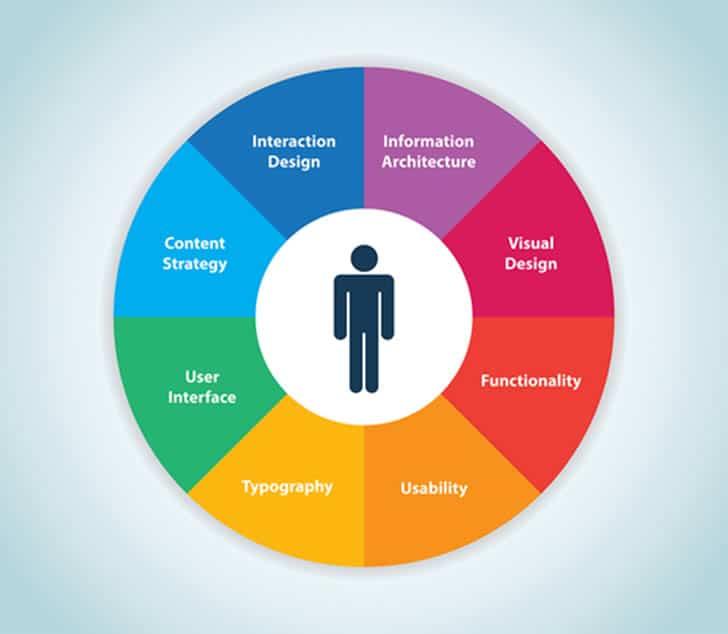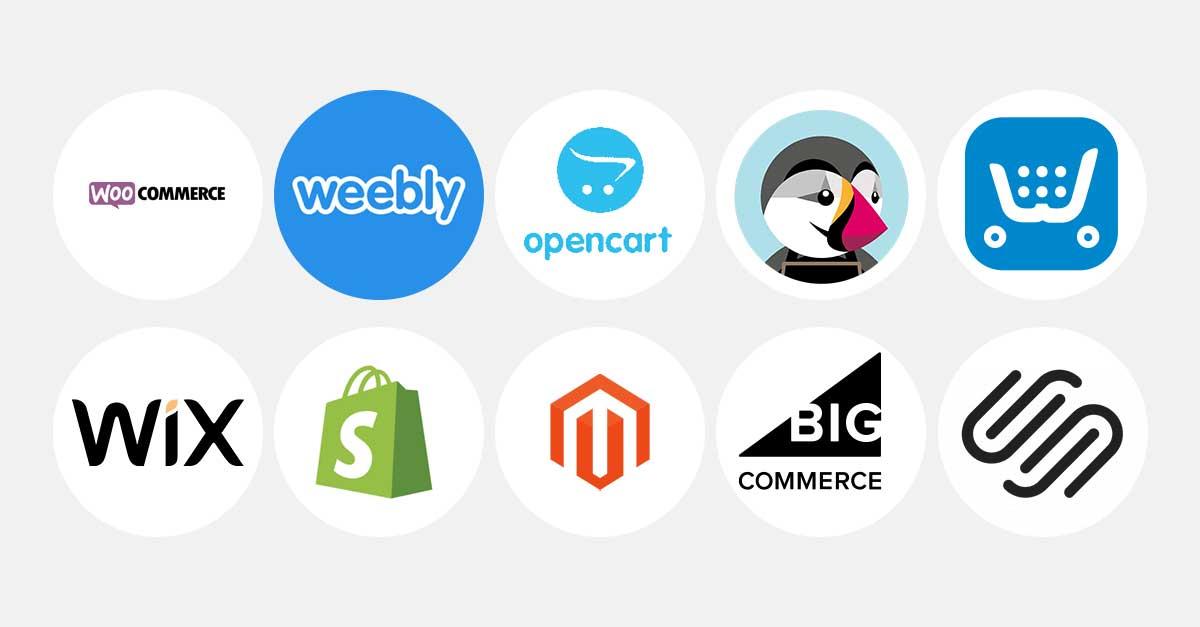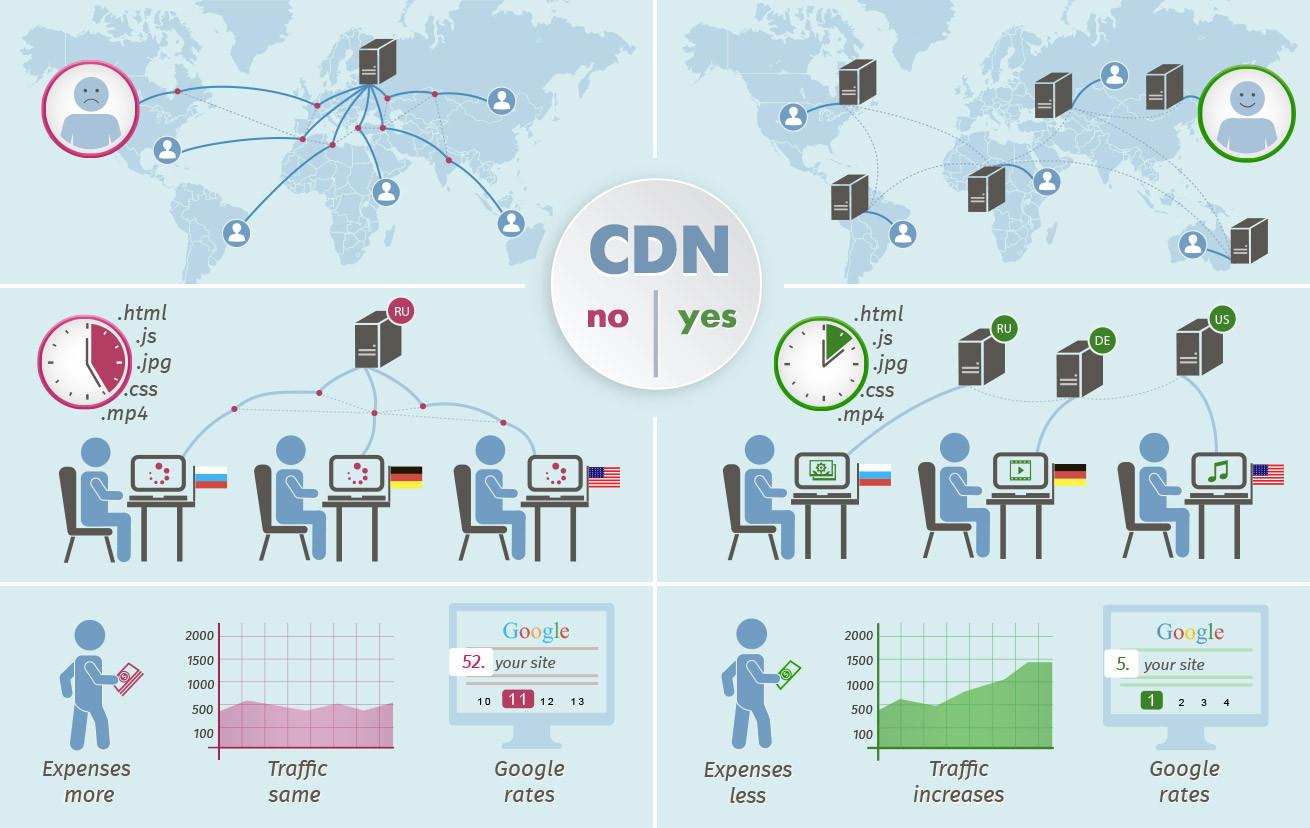Are you ready to take your online business to the next level in 2025? With the vast array of ecommerce platforms and software available today, choosing the right one can feel overwhelming.But don’t worry—we’re here to help! Whether you’re launching your first online store or looking to level up an existing one, the right tools can make all the difference.In this article, we’ll explore the best ecommerce platforms and software of 2025, diving into what makes each option unique and beneficial for your business. From user-friendly interfaces to powerful integrations and cutting-edge features, we’ve got you covered. Let’s find the perfect fit to turn your ecommerce dreams into reality!
Discovering the Top Ecommerce Platforms for Your Business Needs
Choosing the Right Ecommerce Platform
When it comes to selecting an ecommerce platform for your business, the options can feel overwhelming. The right choice not onyl supports your current needs but also scales with your growth. Here are some top contenders that are making waves in 2025:
- Shopify – Renowned for its user-friendly interface, Shopify offers extensive customization options and a plethora of apps to enhance your store’s functionality.
- WooCommerce – Perfect for WordPress users, this plugin allows for deep customization and control, making it ideal for businesses seeking flexibility.
- BigCommerce – With robust built-in features, BigCommerce is tailored for larger businesses that require advanced tools without relying heavily on apps.
- wix eCommerce – Combining simplicity with powerful features, Wix is great for small to medium-sized businesses looking for an easy setup and lovely templates.
- Magento – Known for its high level of customization, Magento is perfect for developers and larger enterprises willing to invest in a more complex setup.
Each platform has its unique strengths, but how do you identify which one aligns with your specific needs? Consider the following key factors:
| Feature | Shopify | WooCommerce | BigCommerce |
|---|---|---|---|
| Ease of Use | ⭐️⭐️⭐️⭐️⭐️ | ⭐️⭐️⭐️ | ⭐️⭐️⭐️⭐️ |
| Customization | ⭐️⭐️⭐️⭐️ | ⭐️⭐️⭐️⭐️⭐️ | ⭐️⭐️⭐️ |
| Cost | ⭐️⭐️⭐️ | ⭐️⭐️⭐️⭐️⭐️ | ⭐️⭐️ |
Additionally, think about your target audience and the type of products you plan to sell. A platform that excels in digital products may not be the best fit for physical goods. Likewise, if you anticipate notable growth, prioritizing scalability in your choice will save you from a potential migration headache down the road. Lastly,consider the level of customer support and community resources available; a well-supported platform can be a game changer when you face challenges.
the ideal ecommerce platform is tailored to your business model and goals. By carefully evaluating the features, costs, and support options of these leading platforms, you can make an informed decision that sets your business up for success in the fast-evolving digital landscape.
Key Features to Look for in 2025 Ecommerce Solutions
As you explore the best ecommerce platforms for 2025, several key features should be at the forefront of your decision-making process. Today’s digital landscape demands flexibility, efficiency, and innovation to keep pace with consumer expectations.
First and foremost, a robust mobile-responsive design is essential. With a significant portion of online shopping conducted through smartphones, your ecommerce solution must ensure a seamless mobile experience. This includes fast loading times, intuitive navigation, and easy checkout processes that cater to mobile users.
Next, look for integrated payment options that provide security and convenience. Customers today expect varied payment methods, including digital wallets, buy now pay later options, and cryptocurrencies. A system that supports multiple payment gateways enhances customer trust and encourages conversions.
Another vital feature is advanced analytics and reporting tools. These tools empower you with insights into customer behavior,sales trends,and inventory management. By leveraging data analytics, you can make informed decisions that enhance marketing strategies and optimize stock levels.
Additionally, consider a platform that offers automation capabilities. Automation can streamline various tasks, from inventory management to customer engagement, allowing you to focus on growth rather then daily operations. Features like automated email marketing and customer segmentation are invaluable in creating personalized shopping experiences.
Lastly, accessibility to customer support and community resources can make a significant difference. Look for platforms that offer 24/7 support, extensive documentation, and active community forums. This level of support ensures that you can troubleshoot issues and find solutions quickly, keeping your online store running smoothly.
| Feature | Importance |
|---|---|
| Mobile-Responsive Design | Enhances user experience and increases mobile sales. |
| Integrated Payment Options | Offers flexibility and builds trust with customers. |
| Advanced Analytics | Informs strategy and optimizes operations based on real data. |
| Automation Features | Reduces manual tasks and improves efficiency. |
| Customer Support | Ensures speedy resolutions and ongoing assistance. |

Comparing Pricing Models: Finding the Right Fit for Your budget
When it comes to choosing an eCommerce platform, understanding the various pricing models is crucial to ensure that you find one that aligns with your financial goals. Each platform offers unique pricing strategies, which can significantly impact your budget and overall business success. here are some common pricing models to consider:
- Monthly Subscription: Many eCommerce platforms, such as Shopify and BigCommerce, operate on a monthly subscription basis. This model provides predictability in costs, allowing you to plan your budget more effectively.
- Transaction Fees: Some platforms may charge a fee per transaction, which can affect your overall profitability. It’s essential to evaluate how these fees align with your expected sales volume.
- Tiered Pricing: Many platforms offer tiered pricing structures based on your business size and requirements.This means you can start with a lower plan and scale up as your revenue grows.
- Freemium Model: Platforms like WooCommerce offer free basic services with the option to upgrade for additional features. This can be a low-risk way to start, especially for new entrepreneurs.
To help you visualize these pricing models, here’s a quick comparison of some popular eCommerce platforms:
| Platform | Monthly Fee | Transaction Fee | Additional Costs |
|---|---|---|---|
| Shopify | $29 | 2.9% + 30¢ | Apps & Themes |
| bigcommerce | $29.95 | 0% (w/ plan) | apps & Themes |
| WooCommerce | Free (self-hosted) | N/A | Hosting & Extensions |
| Squarespace | $18 | 3% on lower plans | Domain & Features |
Choosing the right platform goes beyond just the pricing model; it’s also about the features and support that come with it. Always consider what additional costs might arise,such as payment processing fees,themes,and plugins. By conducting thorough research and comparing these factors, you can select an eCommerce platform that not only fits your budget but also supports your business ambitions.
the key is to evaluate your current needs and project future growth. A platform with a higher monthly fee might offer better scalability and fewer transaction costs, ultimately leading to a more lucrative long-term investment. Equip yourself with the right information, and you’ll be better positioned to make a choice that supports both your financial and operational goals.

User Experience Matters: Analyzing Interface and Usability
In the competitive landscape of eCommerce, user experience (UX) is not just an option; it’s a necessity. When selecting an eCommerce platform, the interface and usability can make or break your online business. A smooth, intuitive shopping experience leads to higher conversion rates and customer satisfaction. It’s essential to choose a platform that prioritizes UX, allowing users to navigate effortlessly through product listings, check out smoothly, and access support when needed.
One of the critical aspects to consider is the design simplicity of the interface. An effective eCommerce platform should feature:
- Clean and organized layouts
- Responsive design for mobile users
- Fast loading times
- Clear calls-to-action
Moreover, usability extends beyond just aesthetics. It encompasses how easily customers can interact with your site to find what they need.A platform that supports robust search functionality and intuitive filtering options is invaluable. As a notable example, platforms like Shopify and WooCommerce offer advanced search capabilities, allowing users to quickly locate products without frustration.
Additionally, consider the ease of customizing the user experience. Platforms that allow you to tailor the interface to reflect your brand’s identity can significantly enhance user engagement. Customization options should include:
- Flexible theme choices
- Customizable checkout processes
- Personalized product recommendations
don’t underestimate the value of customer feedback. An excellent eCommerce platform will provide tools to gather user insights, allowing you to continually refine and enhance the shopping experience. Platforms that integrate with analytics tools can help track user behavior and preferences, guiding you in making informed decisions to optimize interface and usability.
| Platform | User Experience Features | Customization Options |
|---|---|---|
| Shopify | Intuitive dashboard, mobile-friendly | Flexible themes, custom checkout |
| WooCommerce | Advanced search, easy navigation | Wide range of plugins, personalized UX |
| BigCommerce | Smooth checkout process, fast loading | Theme customization, product filters |
Integrating Payment Gateways: Ensuring Seamless Transactions
In today’s competitive eCommerce landscape, integrating payment gateways effectively is crucial for providing a seamless shopping experience. A well-implemented payment gateway not only streamlines transactions but also enhances customer trust, making them more likely to complete their purchases. Let’s explore how to ensure your payment integration is both efficient and customer-friendly.
First,consider the variety of payment options you offer. Consumers have diverse preferences, so including multiple payment methods can significantly reduce cart abandonment rates. here’s a quick rundown of popular payment options to integrate:
- Credit/Debit cards – Still the moast common method of payment.
- digital Wallets – Options like PayPal, Apple pay, and google Pay are gaining traction.
- Buy Now,Pay Later – Services like Afterpay and Klarna can enhance purchasing power.
Another key aspect is security. Ensure that your payment gateway is PCI DSS compliant to protect customer data. Secure integration not only safeguards sensitive information but also builds trust, which is essential for repeat business. Consider using features like:
- Encryption – encrypting data transmitted during transactions.
- Fraud Detection Tools – Implementing measures that identify and mitigate fraudulent activities.
- Two-Factor Authentication – Adding an extra layer of security for sensitive transactions.
Moreover, keep in mind the user experience during the checkout process.A smooth, intuitive checkout can make all the difference. Consider employing strategies such as:
- One-Click Payments – Allow customers to save their payment information for fast future transactions.
- Mobile Optimization – Ensure the payment interface is mobile-friendly for on-the-go shoppers.
- Guest Checkout Options – Make it easy for customers to purchase without creating an account.
To help visualize the differences between various payment gateways, here’s a simple table comparing key features:
| Payment Gateway | Transaction Fees | Supported currencies | Special Features |
|---|---|---|---|
| PayPal | 2.9% + $0.30 | Over 25 | One-click payments |
| Stripe | 2.9% + $0.30 | Over 135 | Custom checkout experience |
| Square | 2.6% + $0.10 | USD only | Integrated POS system |
By carefully selecting and implementing the right payment gateways, you can create a frictionless purchasing experience for your customers. This not only encourages conversions but also nurtures customer loyalty, ensuring success for your eCommerce platform in the long run.Remember, in the realm of online shopping, every second counts, and a seamless payment process can make all the difference.
Boosting Sales with Built-In Marketing Tools and Features
In the competitive world of ecommerce, having the right tools at your disposal can significantly impact your sales figures. Many top platforms in 2025 are equipped with built-in marketing tools designed to streamline your promotional efforts. These features not only save time but also enhance your ability to reach and engage customers effectively.
One of the standout features offered by leading ecommerce platforms is email marketing integration. This allows businesses to easily create and manage email campaigns directly from their dashboard.You can segment your audience, personalize content, and automate follow-up emails, all of which contribute to higher conversion rates. Imagine sending a targeted promotion to customers who have abandoned their carts, encouraging them to complete their purchase with just a few clicks.
Additionally, platforms with SEO tools help optimize your online store for search engines, ensuring that your products are easily discoverable. Built-in features frequently enough include product schema markup, customizable URLs, and integrated blogging capabilities. These tools work together to improve your visibility and attract organic traffic, leading to more sales opportunities.
Social media integration is another game-changer. With features that allow direct sharing of products on platforms like Instagram and Facebook, you can tap into a vast audience. Consider implementing shoppable posts or ads that direct users straight to your store.This not only increases brand awareness but also shortens the path from discovery to purchase.
| Platform | Email Marketing | SEO Tools | Social Media Integration |
|---|---|---|---|
| Shopify | Yes | Basic | Yes |
| WooCommerce | Yes | Advanced | Yes |
| BigCommerce | Yes | Intermediate | Limited |
With these built-in features, you’re not just purchasing a platform; you’re investing in a comprehensive toolkit that empowers your business.By leveraging these tools, you can craft a marketing strategy that not only drives traffic but also converts visitors into loyal customers. It’s time to make the most of what modern ecommerce platforms have to offer!

Mobile Compatibility: Optimizing Your Store for Mobile Shoppers
In today’s fast-paced digital world,ensuring that your online store is optimized for mobile shoppers is not just an option,it’s a necessity. With more than half of all online purchases being made on mobile devices, transforming your eCommerce platform to cater to these users can significantly impact your sales. Here are some key strategies to enhance mobile compatibility:
- Responsive Design: Choose a responsive theme that automatically adjusts to different screen sizes.This ensures that your store looks great and functions smoothly,whether on a smartphone or a tablet.
- Streamlined Navigation: Simplify your navigation menu. Mobile users appreciate a straightforward path to their desired products. Use collapsible menus and large buttons to enhance usability on smaller screens.
- Fast Loading Times: Speed matters. Optimize images and minimize scripts to decrease loading times. A site that takes too long to load can lead to high bounce rates and lost sales.
- Mobile-Friendly Checkout: Simplify the checkout process by reducing the number of steps required to complete a purchase. Integrate mobile payment options like Apple Pay or Google Wallet to enhance user experience.
Moreover, consider implementing touch-friendly elements. Buttons should be large enough to tap with a finger, and forms should be easy to fill out on a mobile device. In addition, testing your store on various devices and browsers is crucial to identify any potential issues that could frustrate mobile users.
Lastly, remember to analyze your mobile traffic regularly.Utilize tools like Google Analytics to track user behavior and conversion rates on mobile devices. Making data-driven decisions can lead to continuous improvements, ensuring that your store remains competitive in the ever-evolving eCommerce landscape.

Scalability and Flexibility: Future-Proofing Your Ecommerce Strategy
In the swiftly evolving world of ecommerce, traditional business models are being challenged by changing consumer expectations and technological advancements. Scalability and flexibility are no longer just favorable traits; they are essential for survival and growth. As you consider the best ecommerce platforms for 2025, look for solutions that allow your business to adapt seamlessly to new opportunities and challenges.
When evaluating platforms, prioritize those that offer robust scalability features. This means selecting software that can handle increased traffic and sales volume without compromising performance. Look for:
- Cloud-based infrastructure that dynamically adjusts to demand
- Multi-channel selling capabilities to reach wider audiences
- Integration with various payment gateways and shipping solutions
Equally vital is the flexibility of your chosen platform. The ecommerce landscape is constantly shifting, and your business needs to pivot quickly in response. Seek out platforms that allow:
- Customizable storefronts that reflect your brand identity
- Easy integration with third-party applications for enhanced functionality
- Responsive design templates for optimal user experience across devices
To illustrate the difference between platforms, consider the following comparison:
| Platform | Scalability | Flexibility |
|---|---|---|
| Shopify | High – Handles large inventories and traffic | Moderate – custom themes available, but limited backend access |
| WooCommerce | Moderate – Depends on hosting; can be optimized for large stores | High – Fully customizable with plugins and themes |
| BigCommerce | High – Designed for growth with enterprise-level features | Moderate – Good customization options, but some restrictions |
By choosing an ecommerce platform that champions scalability and flexibility, you set the stage for long-term success. Your ability to adapt to market trends, customer preferences, and technological innovations will not only future-proof your business but also position it for sustained growth in a competitive landscape. Remember, the right tools can make all the difference in your ecommerce journey.

Customer Support and Resources: Choosing platforms that Have Your Back
When selecting an eCommerce platform, the level of customer support and available resources should be at the forefront of your decision-making process. After all, the last thing you want is to be stuck with a technical issue or a confusing feature without anyone to help you navigate through it. Opt for platforms that not only promise great service but also deliver it consistently.
Here are some critical considerations when evaluating customer support:
- Availability: Look for platforms that offer 24/7 support. This ensures you can get assistance whenever you need it, nonetheless of your time zone.
- Multiple Channels: Favor platforms with diverse support channels such as live chat, email, and phone support. This variety caters to different preferences and needs.
- Knowledge Base: A well-organized library of tutorials, FAQs, and articles can empower you to solve problems independently and enhance your platform experience.
- User Community: Platforms with active forums or user groups can provide invaluable peer support and shared experiences, enriching your learning curve.
Moreover, consider the resources and tools available for you to utilize. Some platforms offer extensive educational content, including:
- Webinars and Workshops: These resources can definitely help you stay updated on the latest features and best practices.
- Case Studies: Learning from the successes and challenges of other businesses can provide insights into best strategies for your own store.
- Integrations and Plugins: Ensure the platform supports a wide range of integrations that can enhance functionality, making it easier for you to tailor your store to meet customer needs.
To give you a clearer picture, here’s a comparative table of some popular eCommerce platforms based on their customer support features:
| Platform | 24/7 Support | Support Channels | Knowledge Base |
|---|---|---|---|
| Shopify | ✔️ | Chat, Email, Phone | Extensive |
| WooCommerce | ✔️ | Chat, Email, Forums | Moderate |
| BigCommerce | ✔️ | Chat, Email, Phone | Extensive |
| Magento | ❌ | Email, Forums | Advanced |
Ultimately, choosing an eCommerce platform that prioritizes customer support and offers abundant resources can save you time, reduce stress, and contribute to your long-term success. Always remember, behind every successful online store is a solid support system ready to tackle challenges head-on.

Success Stories: Real Businesses Thriving on These platforms
in the ever-evolving world of eCommerce, various platforms have emerged as game-changers for businesses of all sizes. Let’s dive into some inspiring examples of companies that have truly harnessed the capabilities of these platforms to achieve remarkable success.
EcoChic Boutique,a enduring clothing brand,started with a vision of promoting eco-friendly fashion. Using Shopify, they leveraged its user-friendly interface and powerful marketing tools to reach a broader audience. Within just two years,they reported a 300% increase in sales. Their success can be attributed to effective SEO strategies and engaging social media campaigns that attracted environmentally conscious consumers.
Another noteworthy example is Brewed Awakening, a specialty coffee shop that transitioned from a local favorite to an international brand. By utilizing WooCommerce, they created a seamless online shopping experience that allowed customers to purchase coffee beans, brewing equipment, and subscriptions directly from their website. The result? A stunning 50% increase in customer retention and the ability to ship globally.
Moreover,TechyToys,a toy retailer,discovered the power of Magento to manage their extensive product range effectively. with its robust inventory management and customizability,they scaled operations to include over 5,000 products without losing efficiency. After implementing targeted email marketing campaigns, their sales surged by 40% in just six months.
| Business Name | Platform Used | Success Metric |
|---|---|---|
| EcoChic Boutique | Shopify | 300% Sales Increase |
| Brewed Awakening | WooCommerce | 50% Customer Retention |
| TechyToys | Magento | 40% Sales Surge |
These stories underscore the potential of the right eCommerce platform in transforming business ambitions into reality. By choosing a platform that aligns with their goals,these companies have scaled new heights,proving that with the right tools,any business can thrive in the digital marketplace.
Frequently Asked Questions (FAQ)
Q&A: Best Ecommerce Platforms and Software in 2025
Q: Why should I consider upgrading my ecommerce platform in 2025?
A: Great question! Ecommerce is evolving rapidly, and staying on top of the latest trends and technology can significantly impact your sales and customer engagement. Upgrading your platform can provide you with advanced features like personalized shopping experiences, better mobile optimization, and improved analytics, helping you not just keep up but actually thrive in a competitive market.
Q: What are some of the top ecommerce platforms to look out for in 2025?
A: In 2025, some of the standouts are Shopify, woocommerce, BigCommerce, and Magento. Each has unique strengths: Shopify is known for its ease of use, WooCommerce for its flexibility, BigCommerce for its built-in features, and Magento for its scalability. Depending on your business needs, one of these could be the perfect fit!
Q: Can these platforms support small businesses and also large enterprises?
A: Absolutely! Many of these platforms are designed to be scalable. For instance, Shopify and BigCommerce cater to both small businesses with user-friendly interfaces and larger enterprises needing advanced features. This means you can grow your business without the headache of switching platforms later on.
Q: What should I look for when choosing an ecommerce platform?
A: When selecting an ecommerce platform, consider factors like ease of use, customization options, payment gateways, SEO capabilities, and customer support. Additionally,think about what features are most critical for your business,such as mobile responsiveness and multi-channel selling capabilities.
Q: How important is mobile optimization for ecommerce in 2025?
A: It’s crucial! With more consumers shopping via mobile devices than ever, a mobile-optimized site is no longer optional—it’s a necessity. Platforms that prioritize mobile-first design can definitely help you capture this growing audience, enhancing user experience and boosting conversion rates.
Q: What about integration with other tools? Is that important?
A: Definitely! Integration capabilities with tools like CRM systems, email marketing platforms, and inventory management systems can streamline your operations and improve your efficiency. Look for ecommerce platforms that offer robust integration options to simplify your workflow.
Q: Are there any ecommerce trends I should be aware of for 2025?
A: For sure! Some key trends include AI-driven personalization, social commerce, and subscription-based models. Incorporating these into your strategy can help you better connect with customers and enhance their shopping experience, creating a loyal customer base.
Q: How can I ensure that my ecommerce store stands out in 2025?
A: Standing out requires a mix of unique branding, extraordinary customer service, and innovative marketing strategies. Utilize the tools your ecommerce platform offers to create personalized shopping experiences, engage on social media, and leverage data analytics to understand your customer base better.
Q: What’s the biggest mistake to avoid when choosing an ecommerce platform?
A: One of the biggest mistakes is choosing a platform solely based on price. While budget is important, it’s essential to consider the long-term value and scalability. A slightly higher investment in a robust platform can pay off significantly as your business grows.
Q: Any final tips for someone starting an ecommerce store in 2025?
A: Start by doing thorough research on different platforms and choose one that aligns with your business goals. Don’t hesitate to take advantage of free trials to test usability. And once you launch, keep an eye on emerging trends and customer feedback to continuously improve your store’s performance!
This Q&A format should help engage readers by addressing their concerns while showcasing the benefits of the best ecommerce platforms in 2025.
Concluding Remarks
As we wrap up our exploration of the best eCommerce platforms and software for 2025,it’s clear that the digital landscape is more vibrant than ever. Whether you’re a seasoned entrepreneur or just dipping your toes into the online selling world, choosing the right platform can make all the difference in your success story.
From user-friendly interfaces to robust features, the eCommerce solutions we’ve discussed cater to various needs and budgets. Remember, the right platform not only streamlines your operations but also enhances your customers’ shopping experience, ultimately driving sales and growth.
So, take a moment to assess your business goals, consider what features matter most to you, and don’t hesitate to test the waters with free trials.The perfect eCommerce platform is out there waiting for you to unleash your vision.
Now that you’re armed with the insights and options for 2025, it’s time to take action. dive in, explore, and watch your business thrive in the ever-evolving digital marketplace. Happy selling!



